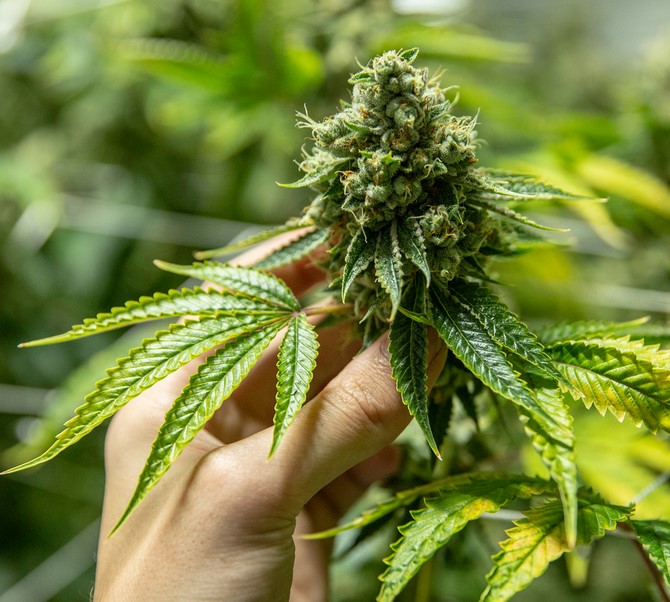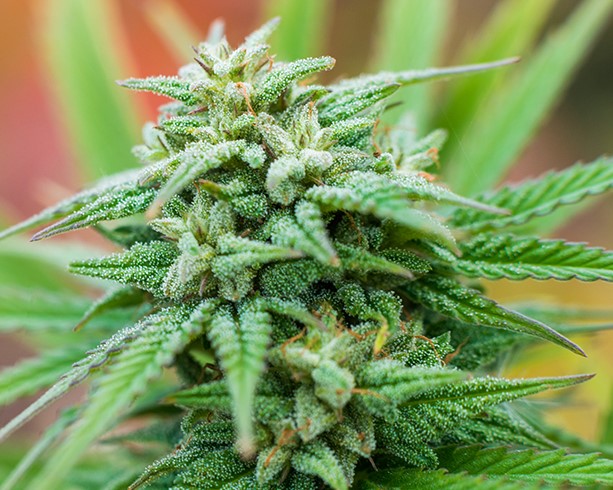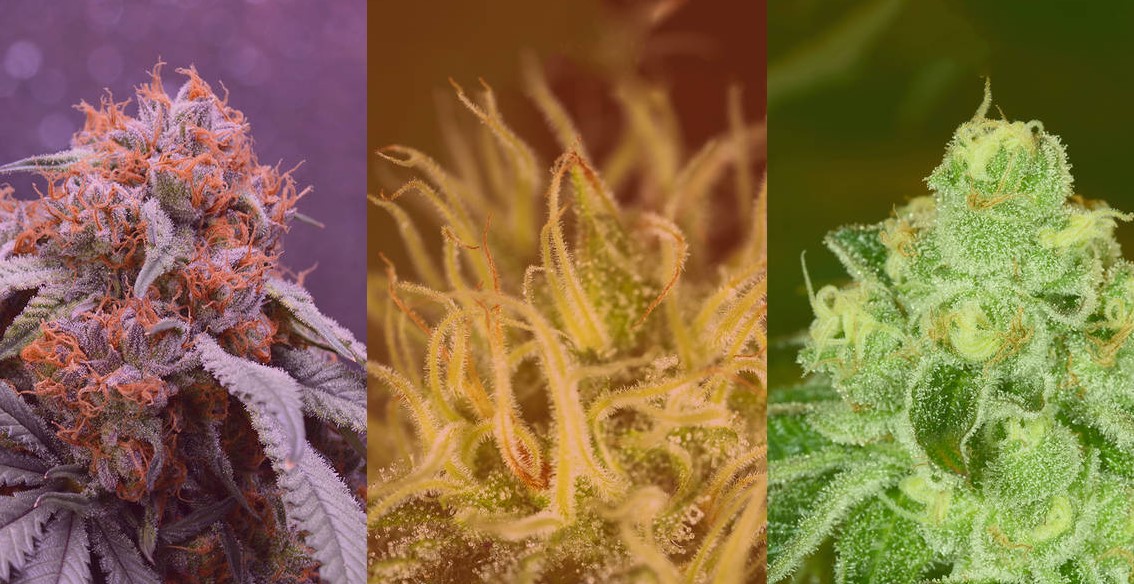Cannabis is a term that refers to several different varieties of plant. Cannabis is the dried leaves, stems, flowers, and seeds of the plant. The manner in which the crop is prepared as well as the type of Cannabis plant determines the sort of weed. If you’d like to buy best cannabis, use our delivery dispensary.

The chemical Δ-9-tetrahydrocannabinol, or THC, is the most essential active component in marijuana. THC has psychotropic effects, which means it can alter mood, attention, reasoning, and cognitive functioning. Cannabidiol (CBD) is another important component of cannabis plants and has relaxing properties but does not have the psychoactive effects of THC. It is also thought to help with pain relief.
The most powerful cannabis strains have a higher THC to CBD ratio, indicating that there is a lot of THC but little CBD. When the ratios are more balanced, CBD can counteract the effects of THC. As a result, the amount of both chemicals in a strain has an impact on how someone feels.
What are the many forms of cannabis? Cannabis is divided into two types based on the species of plant from which it is derived. While these two strains were originally used to produce marijuana, there are now hundreds of other hybrid combinations as a result of them.
Indica vs. sativa: understanding the basics
When cannabis consumers think of “indica” vs. “sativa” marijuana strains, they tend to picture indica types as physically sedating, excellent for watching a movie or falling asleep to, and sativa ones as energizing with uplifting cerebral effects that go well with physical activity, socializing, and creative endeavors. Hybrid strains are meant to have a balance of indica and sativa traits.

Although indica and sativa are sometimes used interchangeably with “on the couch,” they aren’t in all cases. Although indicas do not always boost their consumers, sativas do. When science advances and we discover more about the cannabis plant, it turns out that the chemical compounds contained within each strain—the cannabinoids and terpenes—determine how you’ll feel, not whether it’s an indica or a sativa. In reality, those two names come from botany rather than effects.
Although their effects appear to be similar, there are still some people who believe that indicas, sativas, and crossbreeds have distinct qualities. You may recall a budtender beginning a strain suggestion with the inquiry of which one of those three categories you like if you’ve ever visited a dispensary.
Let’s look at where the terms “indica,” “sativa,” and “hybrid” originated, as well as how a cannabis plant’s chemical makeup affects your body to create feelings.
Origin of indica and sativa
Cannabinoids are a group of chemical compounds found in cannabis. The term “cannabinoid” refers to the chemicals present in marijuana that give it its psychoactive effects, which include euphoria and anxiety relief. Cannabis sativa and Cannabis indica were two distinct species of cannabis recognized in the 18th century; they were each referred to by their own names. Indica was a term used to describe psychoactive plants discovered in India, where it was grown for its seeds, fiber, and hashish production.
Here’s how terms have shifted since their earliest botanical definitions:
- “Sativa,” in its modern sense, refers to tall, thin-leaf cannabis types that are believed to provide energizing qualities. Narrow-leaf drug variants of Cannabis indica ssp. indica were initially known as sativas.
- Indica is a term that has been used to describe plants with broad leaves that are supposed to be calm. Cannabis indica ssp. afghanica is a broad-leafed drug (BLD) variety.
- Hemp grown for non-intoxicating purposes, such as fiber, seeds, and CBD, is referred to as “hemp.” This was the original name of Cannabis sativa.
Although cannabis strains that we consume most frequently descend from Cannabis indica, both names are used—even when incorrectly—to identify the hundreds of different types available on the market today.
What impacts strain effects?
What influence does indica and sativa have on people who have suffered a brain injury?
The chemical make-up of different marijuana strains is primarily determined by the cannabinoids and terpenes present in them.
Cannabinoids
The cannabis plant is composed of hundreds of chemical substances, each with its own set of characteristics. The two most common cannabinoids are THC and CBD, which offer therapeutic and recreational advantages of cannabis.
- THC (delta 9-tetrahydrocannabinol) causes hunger and euphoria, as well as pain and nausea alleviation.
- Cannabidiol (CBD) is a non-intoxicating cannabinoid that has been shown in studies to help with anxiety, pain, inflammation, and a variety of other medical problems.
Cannabinoids can be found in a variety of plants, including cannabis. Cannabinoids are chemicals that act on cannabinoid receptors to produce various effects inside the body. The two most well-known cannabinoids in cannabis are THC and CBD, but there are many more. Cannabis contains a wide range of cannabinoids, but start with THC and CBD to get a sense for it. Select one based on these three categories (neither indicas nor sativas fall exclusively under one category):
- THC is the most prevalent cannabinoid in marijuana, and many strains have high concentrations of it. Consumers seeking for a strong euphoric experience favor THC-dominant strains. Patients using these plants to treat pain, sadness, anxiety, sleeplessness, or other problems
- CBD-rich strains have incredibly tiny amounts of THC and are commonly utilized by individuals who are extremely sensitive to THC or want quick symptom alleviation.
- When THC and CBD are combined, a mild euphoria sensation is achieved without causing intoxication or paranoia. These are frequently a good choice for beginners who wish to experiment with cannabis but don’t want to get too high.
Terpenes
If you’ve ever used aromatherapy to relax or rejuvenate your mind and body, you already know what terpenes are. Terpenes are odorous chemicals produced by plants and fruit. They may be found in lavender flowers, oranges, hops, peppermint, and cannabis, among other things. The same glands that emit THC and CBD secrete terpenes.
The effects of different cannabis strains haven’t been studied yet. Another unanswered question is how various terpenes—as well as other combinations of chemicals—impact the advantages of various marijuana kinds.
There are many types of terpenes in cannabis, and it’s important to be knowledgeable with the most frequent—particularly myrcene, caryophyllene, limonene, and terpinolene—since they’re the most common in marijuana. Because cannabis is a plant, its biochemistry, dosage, and ingestion method are all similar to those of other plants.
The strain’s THC content, tolerance to cannabis, amount consumed (dosage), and ingestion method all affect how a plant affects you. When looking for the best strain or product, keep the following factors in mind.
- Do you have any idea about marijuana? If your tolerance is poor, consider a low-THC strain with low dosages.
- Do you have trouble getting to sleep, or are you prone to anxiety or other THC side effects? If that’s the case, look for a CBD-rich strain.
- Do you want your trip to last long? If that’s the case, edibles (which start with a low dose) are a wonderful alternative. Inhalation techniques or an alcohol tincture, on the other hand, may be used if you’re in a hurry.
When selecting a strain, there are several things to consider, but if indica strains consistently give you a pleasant experience, stick with what you know. If you’re still searching for the ideal marijuana strain, keep these things in mind.
What is sativa?
Sativa strains are associated with a “head high,” an uplifting, stimulating effect that most individuals perceive. Sativas are likewise popular among consumers because they aid in the management of stress and anxiety and because they assist in enhancing attention and clarifying thought.
Sativa effects
Sativa strains have uplifting, euphoric, and energizing effects. Sativas are typically thought of as “daytime” strains that are used to improve productivity, creativity, and attention while doing tasks.
Popular sativa strains
There are many various sativa strains to try, and you’ve probably heard of a few of the most well-known. The majority of dispensaries should have at least some of these sativa marijuana varieties on hand because they’re frequently popular among clients.
- Sour Diesel
- Jack Herer
- Green Crack
- Durban Poison
- Strawberry Cough
- Amnesia Haze
- Super Lemon Haze
- Super Silver Haze
What is indica?
Indica strains are not always known for putting you “in the couch,” but many people connect indicas with strong body effects, such as heavy limbs or a tingly face. Indica strains are also said to help with sleeping and tension management.
Indica effects
The effects of indica strains are calming, euphoric, joyful, and sleepy. Indica plants are considered “nighttime” strains and are used to unwind at the end of the day.
Popular indica strains
There are several indica strains to test, some of which you may have previously encountered. Look for the following well-known indica marijuana strains in your local store.
- Purple Punch
- Granddaddy Purple
- White Rhino
- Bubba Kush
- Northern Lights
- Blueberry
- Grape Ape
- Blue Cheese
What are hybrid strains?
Hybrid strains are produced by combining indica and sativa plants. Hybrid cannabis strains are made from indica and sativa plants because they have a long history of crossbreeding. Due to the high level of crossbreeding that took place in the past, pure indica or pure sativa lineages are uncommon, owing to the illicit nature of much of it to avoid detection by authorities. Despite their names implying otherwise, the majority of “indica” or “sativa” strains contain both indica and sativa genetics.
Hybrid effects
A hybrid cannabis strain is a combination of indicas and sativas. Hybrid marijuana strains are composed of indica and sativa DNA, thus their effects may include both indica and sativa components. The following are some common feelings induced by hybrids: happy, euphoric, elevating, invigorating, relaxing
Hybrid strains are a combination of two different cannabis strains, each with its own set of characteristics. It’s possible to determine the influences that hybrids will have by looking at the lineage (parents) of their parents; for example, if it has more indica in its heritage, it’s likely to produce indica-like effects.
Popular hybrid strains
There are a variety of hybrid strains on the market, and some of the most well-known you’ll come across are among the most renowned.
- GG4
- Blue Dream
- Gelato
- Wedding Cake
- GSC
- OG Kush
- White Widow
- Pineapple Express
How to choose a strain
Choosing the correct cannabis product or strain for you may appear hard, but if you keep the following points in mind, you should be able to discover something that works:
- Do you want to experience a certain emotion or sensation? That’s the first step. If you’re looking for anything in particular (such as watching a film), use the appropriate filters on Leafly or let your budtender know so they can hone in on their ideas.
- Don’t start the conversation with, “I’d like an indica/sativa.” Keep in mind that not all indicas are drowsy or uplifting, and not all sativas are energetic and uplifting. If you tell a budtender you despise sativas because they make you anxious, for example, they may just give you a THC powerhouse like White Fire OG since it’s not a sativa. Meanwhile, a “sativa” like Harlequin—which has low levels of THC and high levels of CBD—might be a better fit. Start with the mood or effect you want to achieve or prevent as we did in our first point. Even if it’s an indica or sativa,
- Keeping an eye on your tolerance for strain strength is a good idea. Modern strains may be quite powerful owing to advancements in agriculture and cross-breeding. Many well-known strains available at your local dispensary have a high THC content, so if your tolerance levels aren’t used to it, you might have a bad experience consuming them. A high THC strain with 25% THC may be less pleasant than one with less THC or one with a greater THC to CBD ratio. There’s no need to feel guilty about looking for a lower amount of THC; you’re simply seeking for the best combination for you and your desired experience.
- Keep track of what you like and dislike while exploring (or avoiding) other strains. You may discover that you like terpene profiles similar to those in previous favorites when experimenting with new cannabis strains. If you prefer the terpinolene-dominant Jack Herer, for example, you’ll probably enjoy Golden Pineapple or XJ-13, which are also terpinolene dominant. Gelato, on the other hand, might not be your thing if its humulene-dominant terp profile isn’t compatible with yours.
- If you’re considering using marijuana, the first thing you should do is talk to your doctor. If you have any medical issues or are presently taking medicine, consult with your doctor or a medical expert before using cannabis. They might have suggestions for you that work together with your current medical/health plan.
